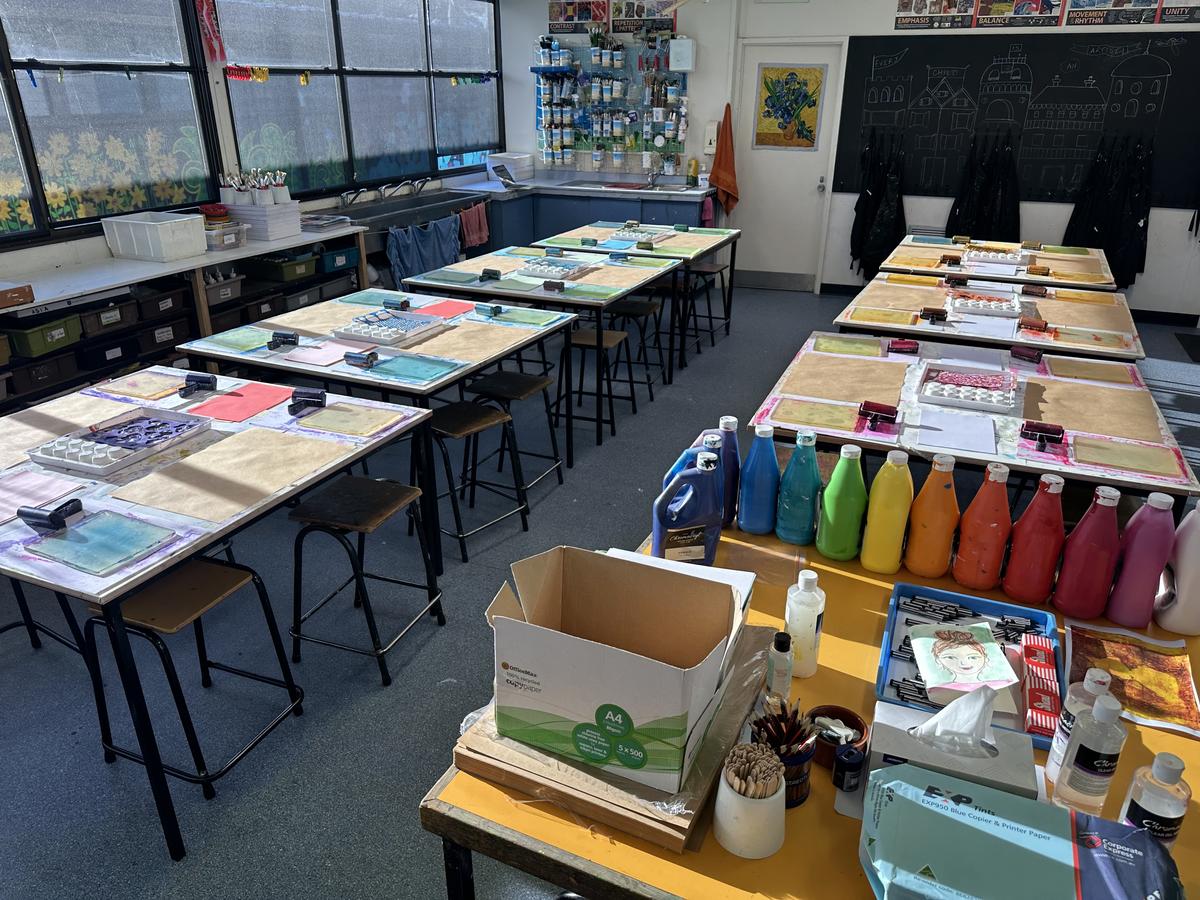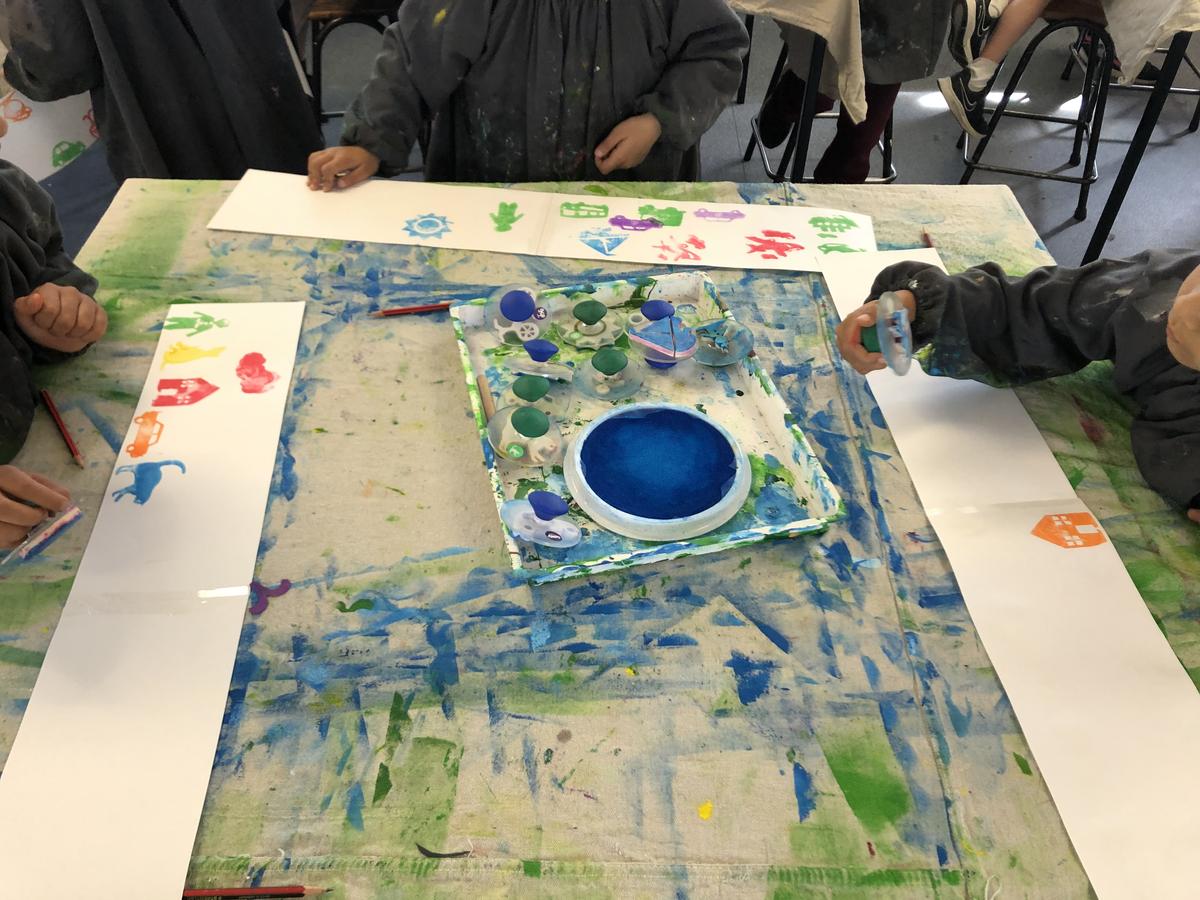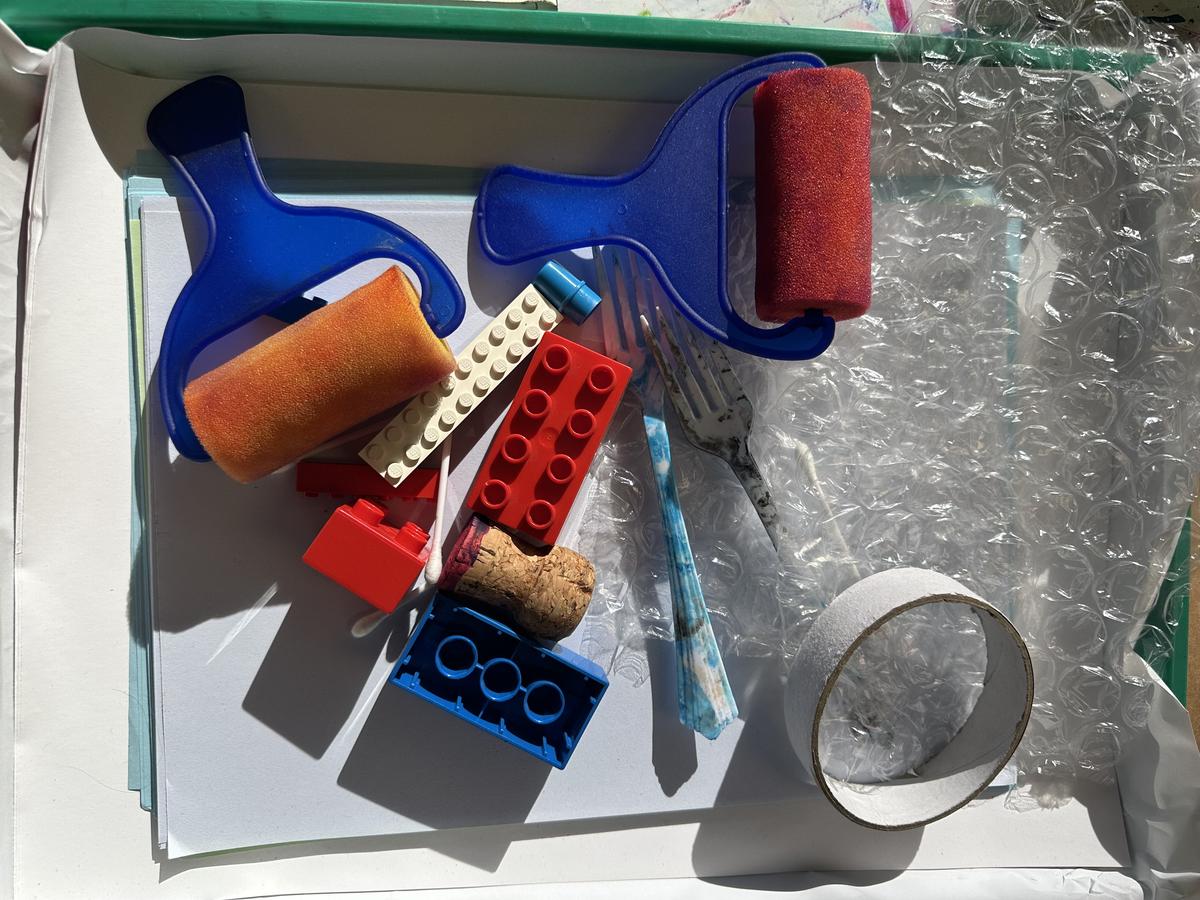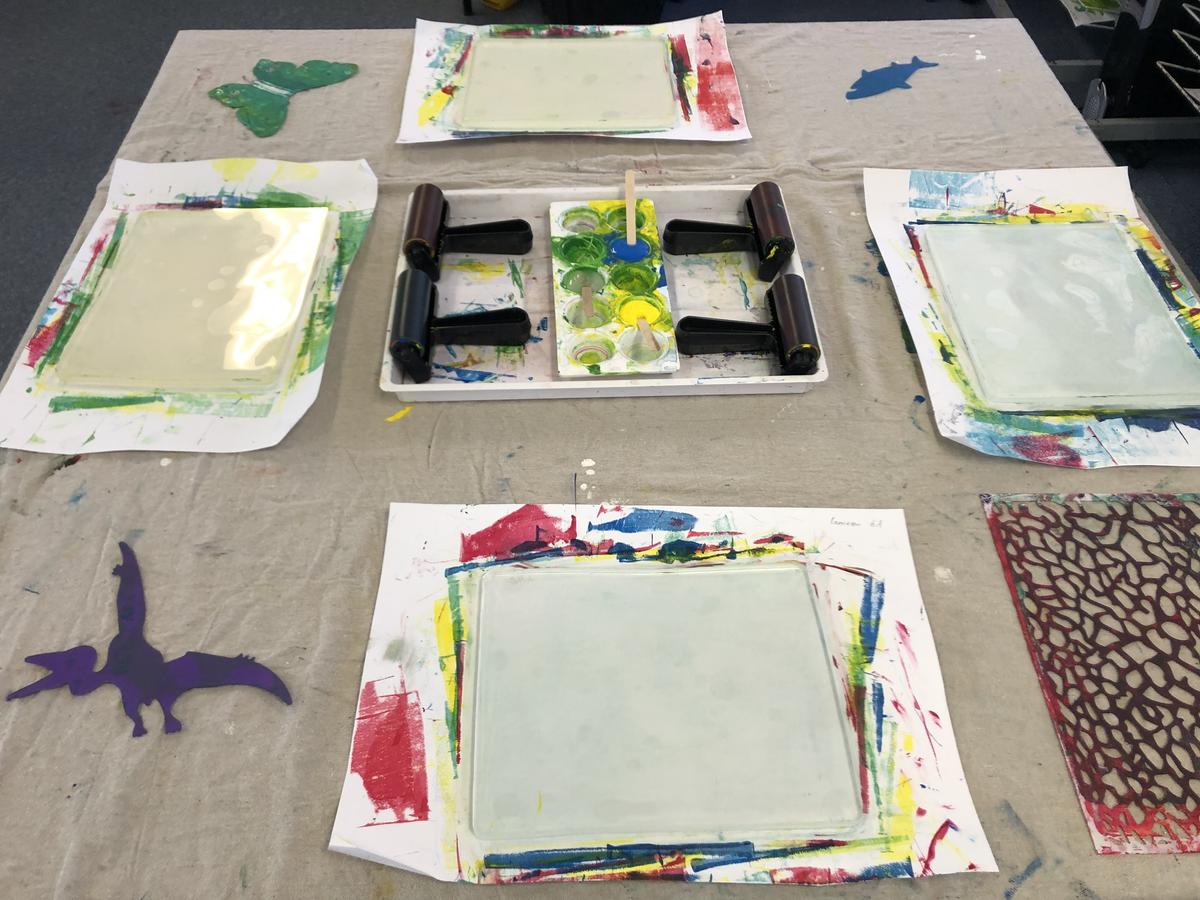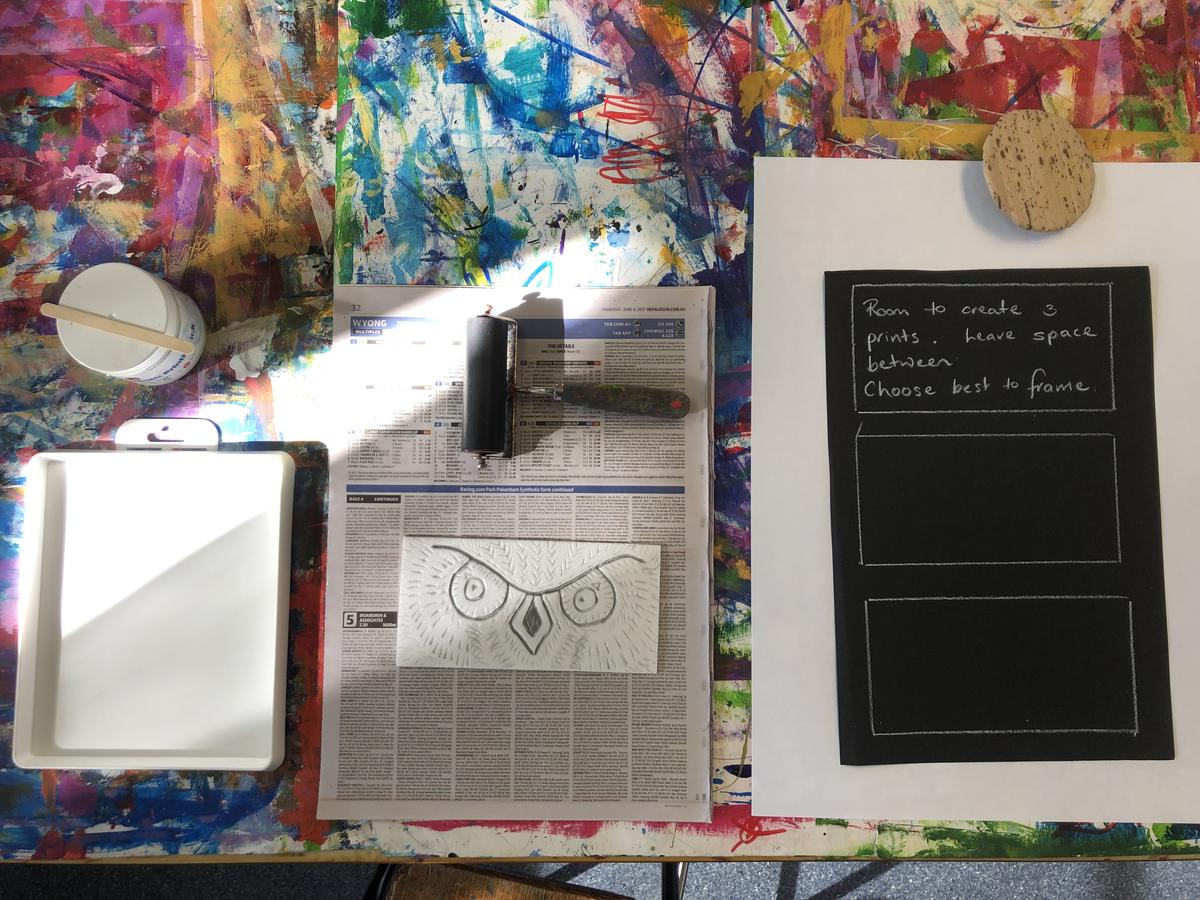Art Term 2 Newsletter

Welcome to Term 2
The term started well with all students rolling into printmaking! This is a great medium for students to learn about shape, space, texture, colour and composition. There are many traditional and contemporary artists and processes for students to explore though printmaking.
Teaching and Learning in Art
Across all year levels, Art lessons are designed with engagement in mind and incorporate the development of art skills, imagination and creativity. The learning intentions are based around the elements of art and principles of design. Students learn about other artists and explore a wide range of media throughout the year.
This term the whole school focus is on Portraits and Printmaking.
Foundation
In Term Two, Foundation students are given opportunities to experiment with different materials and techniques to make art works. They are developing listening skills through stories about artists and learning to follow simple instructions about using art supplies and packing up. Foundation students explore drawing portraits through observing their own image in mirrors and try to replicate the lines shapes and colours they see. They draw portraits of themselves and others. This term Foundation students will also explore printmaking using stamps, sponges, cardboard, bubble wrap and foam rollers. These artworks focus on experimental mark making allowing students to explore textures, lines, shapes and colours. They are learning about colour mixing using primary colours and share their discoveries with their class.
Year 1 and 2
Students are developing their skills in communicating their ideas through drawing, painting and printmaking this term. They learn about art and artists through picture story books and create artworks inspired by illustrations. In year 1 and 2 students become more experienced in drawing their own image. They are learning about portraiture and view artworks that have been submitted to the Young Archie competition. They use mirrors to observe what their facial feature look like and become more detailed in their drawings. This term students will also explore printmaking using found objects, stamps, sponges, cardboard, bubble wrap and foam rollers. This process is called relief printmaking and while much of it is experimental, it can be used to intentionally to create entire object outlines and details. Through the process they are learning about colour mixing using primary colours to create secondary colours and add black or white to create tints and shade. Students share their discoveries with their class and learn to talk about what they like about art works that they view.
Year 3 and 4
Students become more expressive in communicating their ideas through drawing, painting and printmaking. They learn about art styles and artists through looking at images and learning about the artists' lives and influences. They use these artworks as inspiration for their own work in that style. In Year 3 and 4, students are moving beyond pre-made stamps and found objects to create collagraph and relief stamps of their own. They become better at creating representational images into printing foam and include more detail and texture to their artworks. Concepts such as positive and negative space, symetry and reverse images are explored. They learn about warm and cool colours, colour value and and layering colours through printmaking techniques. Students are able to communicate their ideas through art and are given opportunities to share their art in gallery walks as well as presenting their work to the group.
Year 5 and 6
Students explore how visual artists work and explain how ideas are expressed through the artworks they make and view. They explore these processes to create artworks of their own. In year 5 and 6, students use gelliplates, brayers, texture plates and make stencils of their own for printmaking. Concepts such as radial symmetry, positive and negative space and image reversal are explored. Students use a wide variety of quality print making media such as foam, lino and etching cards along with ink and acrylic paint to create prints. They learn to create a wide range of colours, create contrast with complementary colours and use colour to express emotions through art. Students are able communicate their ideas through art, evaluate their processes, and discuss their art and the art of others when presenting their work to the group.
Communication
If you have any queries along the way, please feel free to contact me using my email.
Suzanne Reid - (suzanne.reid@education.vic.gov.au)
We use Sentral to communicate School and Foundation Information and Class Dojo to celebrate the children’s daily learning. We hope you have been enjoying the Dojo posts and photos from your teacher!

